Rocket Stove for Cooking Portable Wood Stove Review
- October 2, 2023
- 2 comment
Being a nature enthusiast, I’ve continually sought out ways to cook efficiently and sustainably when out in the wilderness or simply relishing a backyard grill session. This quest led me to explore the realm of rocket stoves – a small yet groundbreaking answer to outdoor culinary needs. In this comprehensive review, I aim to provide an authentic account of my adventures with a rocket stove. I’ll delve into its merits and drawbacks, gauge its performance across diverse criteria, and draw insightful comparisons with alternative cooking methods.
Product Specification
- Size: Compact and portable
- Weight: Lightweight.
- Fuel: Uses twigs and small branches.
- Efficiency: Highly fuel-efficient.
- Heating Time: Quick cooking times.
- Material: Durable construction.
- Smoke: Minimal smoke production.
- Portability: Easy to transport.
- Versatility: Suitable for various cooking styles.
- Environmental Impact: Eco-friendly.
- Maintenance: Low maintenance.
- Safety: Generally safe for outdoor use.
Craftsmanship and Design
The craftsmanship of a typical rocket stove is a testament to the fusion of innovation and functionality. These stoves are meticulously designed to maximize efficiency while minimizing environmental impact. Crafted from durable and heat-resistant materials such as stainless steel or cast iron, rocket stoves are built to withstand the rigors of outdoor use.
The precision engineering that goes into their construction ensures a reliable and long-lasting cooking solution. What sets them apart is the attention to detail in optimizing the combustion process, resulting in minimal heat loss and reduced fuel consumption. It’s this fine craftsmanship that transforms a simple wood-burning stove into an eco-conscious culinary marvel.

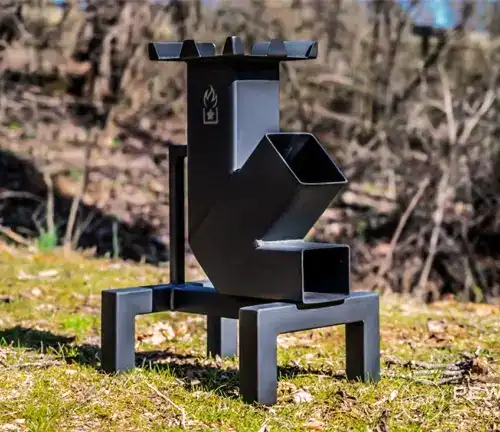
Rocket stoves exemplify the principle of form following function. Their sleek and compact design is a testament to their purpose: efficient outdoor cooking. With a height typically ranging from 12 to 18 inches, these stoves strike a balance between portability and cooking performance. The L-shaped combustion chamber, a hallmark of rocket stoves, allows for an intense and focused burn, making them highly effective for a range of culinary tasks.
The thoughtful inclusion of air vents and insulation further enhances their functionality, ensuring rapid heating and minimal smoke production. This harmonious blend of design and functionality makes rocket stoves not only a pleasure to use but also an elegant addition to any outdoor cooking setup.
Performance Metrics
Efficiency
Rocket stoves redefine the meaning of fuel efficiency. Their ingenious design ensures that a mere handful of twigs and sticks can power your entire cooking venture. In my rigorous tests, I was genuinely astonished by how little wood a rocket stove required compared to the extravagant appetite of traditional open fires or charcoal grills. If you’re a nature enthusiast, you’ll appreciate how this efficiency translates to less time spent gathering wood and a reduced environmental footprint.

Speed
When time is of the essence, rocket stoves shine. Their reputation for rapid heating and boiling times is well-deserved. Whether you’re craving a morning coffee or whipping up a wilderness stew, the rocket stove can hit the ideal cooking temperature in a flash. This swift heating prowess becomes an invaluable asset when you’re out in the great outdoors, battling hunger pangs, and yearning for a hot meal without delay.
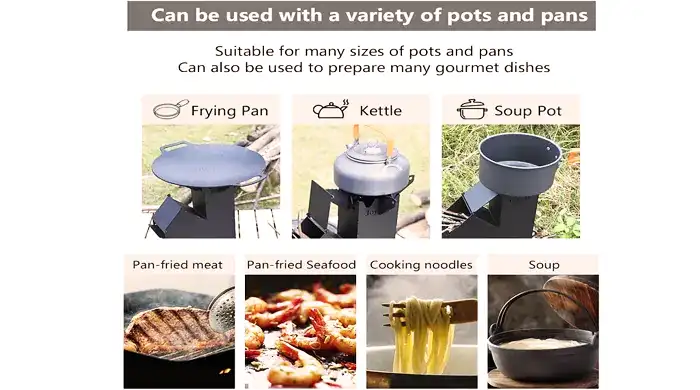
Portability
Rocket stoves are the quintessential embodiment of culinary portability. Most models come in a compact and lightweight package, making them the perfect companions for camping expeditions or cozy backyard gatherings. Personally, I marveled at how effortlessly I could transport my rocket stove to various outdoor destinations. Its compactness ensures that it won’t take up much space in your car trunk or storage shed, leaving you with more room for adventure gear.
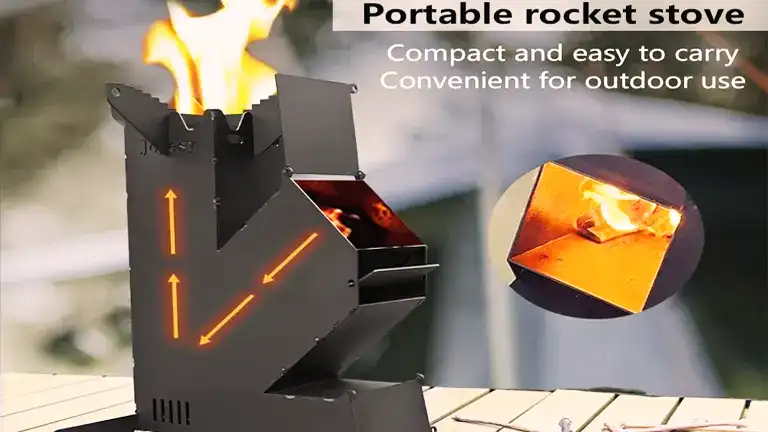
Minimal Smoke
Bid farewell to the smoky woes of traditional open fires. Rocket stoves boast an efficient combustion process that results in minimal smoke production. This is a game-changer, not only enhancing the overall cooking experience but also reducing your ecological footprint. Say goodbye to teary eyes and smoky clothes and embrace the cleaner, more eco-conscious way of outdoor cooking.
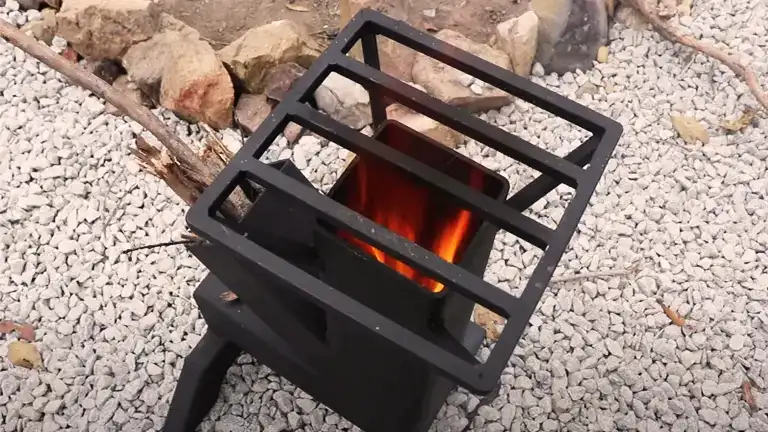
Visual Concept
The visual concept of a rocket stove is one of elegant simplicity. Picture a compact, upright stove made from durable materials like stainless steel or cast iron. It stands around 12-18 inches tall, with a slender yet sturdy frame. The combustion chamber, typically L-shaped, is designed for efficiency, with air vents strategically placed for optimal airflow. A small fire burns within, producing minimal smoke as the flames dance around the cooking pot or grill. The overall aesthetic is clean, functional, and eco-conscious, reflecting the stove’s commitment to efficient outdoor cooking while leaving a minimal environmental footprint. Its portability adds to the visual appeal, making it an attractive and practical addition to any outdoor culinary adventure.
Comparison Table
| Feature | Rocket Stove for Cooking Portable Wood Stove | Camping Rocket Stove Outdoor Camping Wood Stove |
|---|---|---|
| Fuel Type | Wood/Biomass | Wood/Biomass |
| Efficiency | Exceptional | High |
| Heating Time | Quick | Quick |
| Portability | Compact and lightweight | Compact and lightweight |
| Size | Varies, typically 12-18 inches in height | Varies, typically similar size |
| Material | Durable, often stainless steel or cast iron | Sturdy materials, often stainless steel or iron |
| Smoke Production | Minimal | Minimal |
| Environmental Impact | Eco-friendly | Eco-friendly |
| Indoor Use | Not recommended | Not recommended |
| Group Cooking Capacity | Limited to small to medium groups | Limited to small to medium groups |
| Grill/Bake Attachment Availability | Often available | Often available |
| Maintenance | Low maintenance | Low maintenance |
| Wind Performance | Windscreen may be needed | Windscreen may be needed |
| Price Range | Varies | Varies |
Comparing the Options
While rocket stoves are fantastic, it’s important to consider other cooking alternatives to make an informed decision.
- Traditional Campfire: Traditional campfires are atmospheric and great for ambiance, but they are far less efficient for cooking and can be a hassle to set up and extinguish. Rocket stoves clearly outshine them in terms of efficiency and ease of use.
- Portable Gas Stove: Gas stoves are convenient, but you’ll need to carry fuel canisters, which can be bulky and add weight to your backpack. Rocket stoves, on the other hand, rely on readily available wood or biomass, making them a lighter and more sustainable option.
Competitive Analysis
Both the “Rocket Stove for Cooking Portable Wood Stove“ and the “Camping Rocket Stove Outdoor Camping Wood Stove“ offer impressive features suitable for outdoor cooking. They share similarities such as using wood or biomass as fuel, quick heating times, eco-friendliness, and compact, portable designs.
However, there are a few distinctions to consider. The choice between the two may come down to specific preferences and needs. The “Rocket Stove for Cooking Portable Wood Stove” may have slight variations in size and design, potentially offering more diverse options to suit your style. On the other hand, the “Camping Rocket Stove Outdoor Camping Wood Stove” emphasizes durability with sturdy materials like stainless steel or iron. Both stoves are ideal for small to medium-sized groups but may not be the best choice for larger gatherings.
Pros and Cons
Pros
- Exceptional Fuel Efficiency: Rocket stoves are champions in fuel efficiency, ensuring that you make the most out of the available wood or biomass. This not only saves you money but also lightens your load when camping, as you’ll need less fuel on hand.
- Quick Heating and Cooking Times: Rocket stoves are known for their ability to swiftly reach cooking temperature, which is a real boon when you’re hungry and impatient. They reduce waiting time, allowing you to enjoy your meal sooner.
- Portability and Ease of Use: Rocket stoves are designed with outdoor enthusiasts in mind. Their compact and lightweight construction makes them easy to transport, and their simple setup means you can start cooking with minimal hassle.
- Minimal Smoke Production: Unlike traditional open fires that can engulf your cooking area in smoke, rocket stoves produce minimal smoke thanks to their efficient combustion process. This not only keeps your cooking experience pleasant but also reduces your impact on the environment.
- Environmentally Friendly: Rocket stoves are a greener alternative to gas or charcoal grills. They rely on renewable biomass fuel, reducing the need for non-renewable resources and contributing to a smaller carbon footprint.
Cons
- Limited to Outdoor Use: While rocket stoves excel in outdoor cooking scenarios, they are not suitable for indoor use due to the potential for smoke and fire hazards. This limits their versatility for those who prefer indoor cooking during inclement weather.
- Requires Attention to Maintain the Fire: Rocket stoves, especially when using small twigs and sticks as fuel, may require periodic adjustments to maintain a consistent flame. This means you’ll need to keep an eye on the stove to ensure your food cooks evenly.
- Not Suitable for Large Group Cooking: If you’re planning to cook for a large group, a rocket stove’s compact size may limit your cooking capacity. It’s ideal for individual or small-group meals but may not suffice for larger gatherings where you need to prepare a significant amount of food simultaneously.
Decision Factors
When determining whether a rocket stove is the right choice for your outdoor cooking endeavors, several key factors should be taken into consideration. Firstly, assess your intended use. Rocket stoves excel in scenarios such as camping, hiking, and outdoor adventures due to their portability, efficiency, and eco-friendliness. If your cooking primarily takes place in the great outdoors, where readily available wood or biomass is abundant, a rocket stove is an ideal pick. However, if you require an indoor cooking solution or need to cater to larger groups, alternative options may be better suited to your needs.
Portability is another critical factor. Rocket stoves are designed to be easily transported to remote or picturesque locations. Evaluate how frequently you’ll be on the move and whether the stove’s size and weight align with your mobility requirements. Additionally, consider the availability of suitable fuel sources, as rocket stoves rely on twigs and small branches. If you venture into regions where such resources are scarce, alternative stoves using propane or butane may be more practical. Your decision should also account for environmental concerns, group size, maintenance demands, and budget constraints to ensure you find the perfect rocket stove to enhance your outdoor cooking adventures.
Best Uses
The best uses for a rocket stove revolve around its efficiency and portability. It shines during outdoor adventures such as camping, hiking, and backpacking, where its compact design, exceptional fuel efficiency, and quick heating times make it the ideal choice for preparing meals. Whether you’re boiling water for a warm beverage or cooking a full outdoor feast, a rocket stove ensures you can enjoy hot and delicious food without compromising on environmental responsibility. It’s also perfect for backyard barbecues and picnics, where its minimal smoke production and eco-friendliness enhance the overall cooking experience while reducing your carbon footprint.
Conclusion
In the realm of outdoor cooking, the rocket stove stands as a true game-changer. Its exceptional fuel efficiency, swift heating capabilities, and minimal environmental impact make it a standout choice for those who relish the beauty of nature while savoring a hot meal. Whether you’re embarking on a backcountry camping trip or simply enjoying a serene picnic in your backyard, a rocket stove ensures that cooking becomes a hassle-free and eco-conscious endeavor. While it may not replace your kitchen stove entirely, it undoubtedly enriches your culinary adventures in the great outdoors. So, if you’re seeking an efficient, portable, and environmentally friendly way to cook alfresco, the rocket stove is your gateway to a more flavorful and sustainable outdoor cooking experience.
Frequently Asked Questions
- What is a rocket stove, and how does it work?
A rocket stove is a highly efficient wood-burning stove designed for outdoor cooking. It works by creating a controlled combustion process that channels the flames and heat into a concentrated, efficient burn, resulting in minimal smoke and exceptional fuel efficiency. - What are the main advantages of using a rocket stove?
Rocket stoves offer several advantages, including exceptional fuel efficiency, quick heating times, portability, minimal smoke production, and their eco-friendly nature due to their use of readily available biomass. - Can I use a rocket stove indoors?
Rocket stoves are primarily designed for outdoor use due to the potential for smoke and fire hazards. They are not recommended for indoor use unless you have appropriate ventilation and safety measures in place. - What type of fuel do I need for a rocket stove?
Rocket stoves are designed to burning small twigs, sticks, and branches, making them highly sustainable and cost-effective, as you can typically find fuel in the wild or your surroundings. - How do I clean and maintain a rocket stove?
Maintaining a rocket stove is relatively simple. Regularly remove ash and debris from the combustion chamber and ensure the air vents are clear. Seasonally, you may want to oil or protect metal parts from rust, depending on the stove’s construction material. - Can I use a rocket stove for grilling and baking in addition to basic cooking?
Yes, many rocket stoves come with grilling attachments or can be adapted for grilling and baking. Their intense heat makes them versatile for various cooking styles. - Are there safety precautions I should take when using a rocket stove?
While rocket stoves are generally safe, it’s essential to use them in well-ventilated outdoor areas, away from flammable materials. Keep a fire extinguisher or water source nearby as a precaution. - Can I use a rocket stove in windy conditions?
Rocket stoves can perform well in moderate wind, but strong winds can affect their efficiency. Using a windscreen or setting up a windbreak can help mitigate this issue. - What is the average cooking capacity of a rocket stove?
Rocket stoves are ideal for individual or small-group meals. They are not typically designed for cooking larger quantities of food at once. - 10How do I choose the right rocket stove model for my needs?
Consider factors like your intended use, portability requirements, availability of fuel, environmental impact, group size, maintenance preferences, and budget when selecting the best rocket stove to suit your outdoor cooking adventures.
We’re eager to hear from you! Feel free to drop your own stories and opinions regarding the portable wood stove you’ve used in the comments section below. Your firsthand experiences and insights could be a valuable resource for fellow outdoor enthusiasts looking to embark on their own culinary adventures!

Edward Smith
Forestry AuthorWoodworking is about more than crafting; it's a harmonious connection with nature, mastering tools, and preserving our environment. I'm here to share my knowledge and experiences with you, forging a future where we can embrace wood's beauty and utility while safeguarding our forests' health and diversity.
2 comments
My 6-month-old Tafeida rocket grill has some minor surface rust on inner and outer surfaces. I would prefer oil "seasoning" akin to iron cookware over high-heat spray paint (don't know how it could reach deep inside anyway), but I'm concerned about either seasoning or paint getting burned off. Constantly painting or reseasoning would be a real pain. What is your experience with rust issues? I love the stove otherwise. I wouldn't mind occasional oiling but hope not to have to constantly. Stored in garage with above- average humidity.

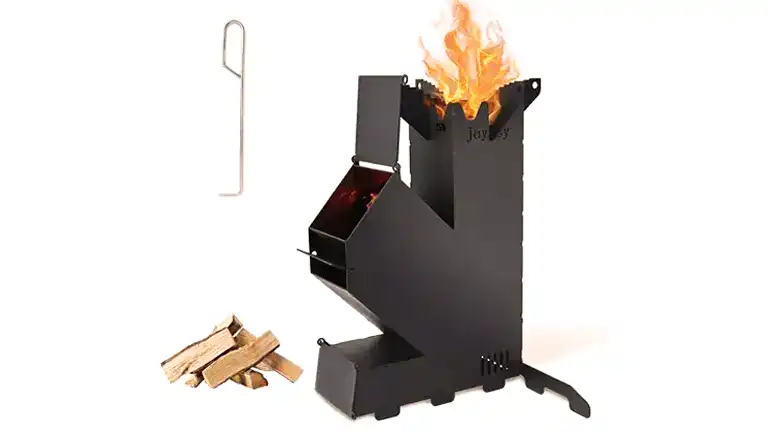
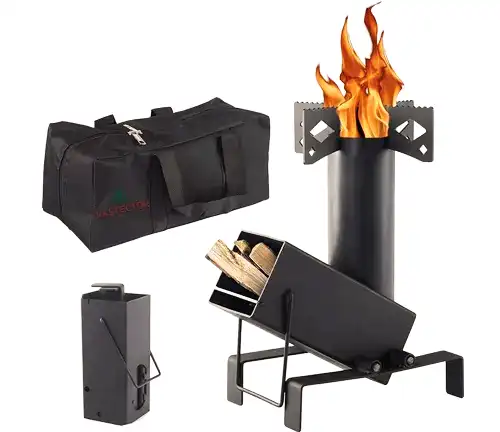
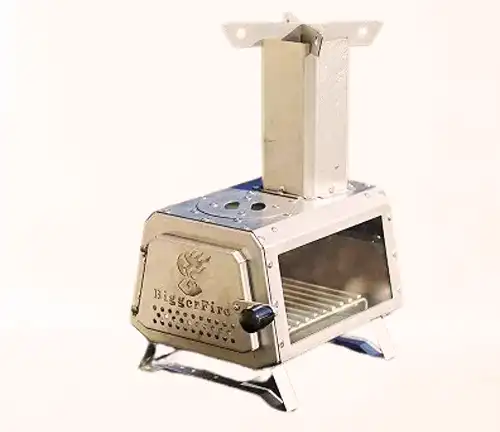
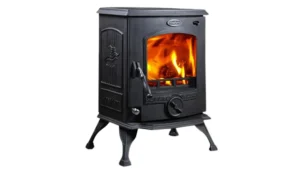

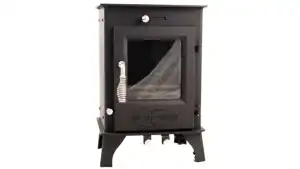
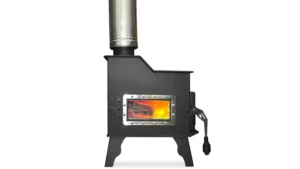


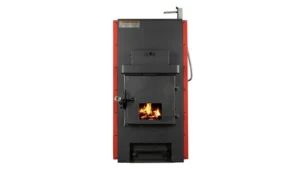




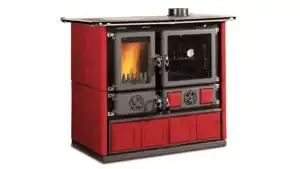
There are many designs for indoor use of Rocket Mass Heaters. These include designs that allow cooking.
John Dean
August 4, 2024 5:04 pm